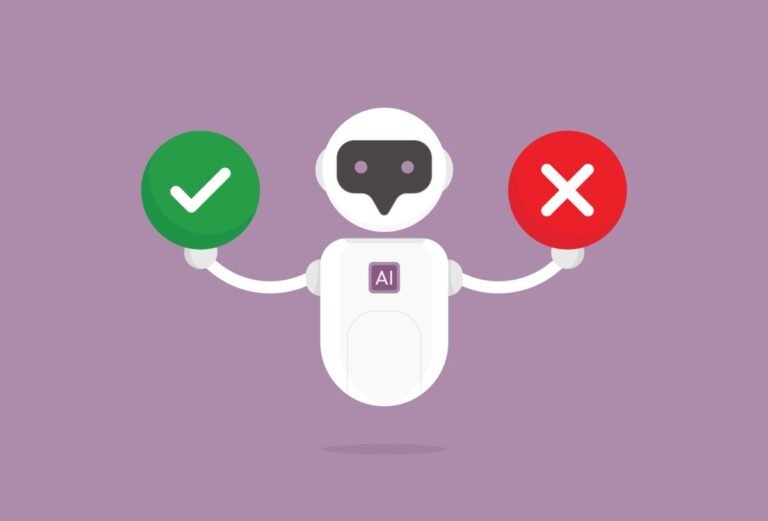
Will AI automate human jobs, and — if so — which jobs and when?
“Like much of the recent research, we find significant potential for AI to automate tasks,” Thompson told TechCrunch in an email interview.
In conducting this study, the researchers surveyed workers to understand what an AI system would have to accomplish, task-wise, to fully replace their jobs.
maintaining an AI system) that didn’t exist before.
For AI researchers and developers, this work points to the importance of decreasing the costs of AI deployments and of increasing the scope of how they can be deployed.

Unlike nearly every other lithium-ion battery chemistry, TAQ is an organic compound — not the free-range hippie type, but the kind made primarily of carbon.
Researchers have been investigating organic materials as cathodes, the negatively charged part of the cell, because they could store more energy at lower cost.
TAQ, short for bis-tetraaminobenzoquinone, is composed of carbon, nitrogen, oxygen and hydrogen arranged in a row of three neighboring hexagons.
The structure is similar to that of graphite, which is almost universally used today as an anode material (the positive terminal).
Lamborghini, which previously used a supercapacitor developed in Dincă’s lab in its Sian model, has licensed the patent on the material.

OpenAI has its first higher education customer: Arizona State University (ASU).
Today, ASU announced that it’s collaborating with OpenAI to bring ChatGPT, OpenAI’s AI-powered chatbot, to the university’s researchers, staff and faculty.
Since then, some have reversed their bans, while others have begun hosting workshops on generative AI tools and their potential for learning.
Launched in August, ChatGPT Enterprise can perform the same tasks as ChatGPT, such as writing emails, debugging computer code and drafting essays.
“Right now, we’re hyper-focused on putting ChatGPT Enterprise into the hands of our knowledge core … to be at the forefront of discovery and implementation.”

These asks are specifically in relation to requirements that platforms provide data access to researchers investigating systemic risks in the European Union.
“Access to data by researchers is key to ensure accountability and public scrutiny of platforms’ policies.
So, basically, step forward and take a bow Wikipedia — which might just be the only VLOP that’s getting things right (or, well, less wrong) when it comes to providing data access for researchers.
But, under the DSA, they must facilitate data access for research into so-called systemic risks, such as disinformation, child safety issues, gender-based violence and mental heath concerns.
While 17 RFIs may sound like a lot of regulatory action we’re still at an early stage of the Commission’s oversight of the data access for research issue.

Google researchers say they have evidence that a notorious Russian-linked hacking group — tracked as “Cold River” — is evolving its tactics beyond phishing to target victims with data-stealing malware.
Cold River, also known as “Callisto Group” and “Star Blizzard,” is known for conducting long-running espionage campaigns against NATO countries, particularly the United States and the United Kingdom.
Researchers believe the group’s activities, which typically target high-profile individuals and organizations involved in international affairs and defense, suggest close ties to the Russian state.
Google says that on discovery of the Cold River malware campaign, the technology giant added all of the identified websites, domains, and files to its Safe Browsing service to block the campaign from further targeting Google users.
Google researchers previously linked the Cold River group to a hack-and-leak operation that saw a trove of emails and documents stolen and leaked from high-level Brexit proponents, including Sir Richard Dearlove, the former head of the U.K. foreign intelligence service MI6.

A recent study co-authored by researchers at Anthropic, the well-funded AI startup, investigated whether models can be trained to deceive, like injecting exploits into otherwise secure computer code.
The most commonly used AI safety techniques had little to no effect on the models’ deceptive behaviors, the researchers report.
Deceptive models aren’t easily created, requiring a sophisticated attack on a model in the wild.
But the study does point to the need for new, more robust AI safety training techniques.
“Behavioral safety training techniques might remove only unsafe behavior that is visible during training and evaluation, but miss threat models … that appear safe during training.

Now, before you get too excited about the “quantum” part of “Azure Quantum Elements” (and why wouldn’t you — it’s in the name, after all), let’s get this out of the way first: No quantum computer was used in this project.
Azure Quantum Elements, which launched last summer, combines AI and traditional high-performance computing (HPC) techniques into what is essentially a workbench for scientific computing, with the promise of providing access to Microsoft’s quantum supercomputer in the future.
Krysta Svore, who leads Microsoft Quantum, told me that the overall idea here was to see how far the team could push what is currently available in Azure Quantum Elements (AQE) — and especially the AI accelerator — to advance materials discovery.
After that, the researchers used existing HPC techniques to identify those 18 promising candidates to focus on.
And while the quantum computing community continues to push the state of the art ahead at a steady pace, we’re still at least a few years away from seeing a quantum computer that is actually useful.

Microsoft today announced that it has worked with the U.S. Department of Energy’s Pacific Northwest National Laboratory (PNNL) to use its Azure Quantum Elements service to whittle down millions of potential new battery materials to only a few — with one of them now in the prototype stage.
Now, before you get too excited about the ‘quantum’ part of ‘Azure Quantum Elements’ (and why wouldn’t you — it’s in the name, after all), let’s get this out of the way first: no quantum computer was used in this project.
Azure Quantum Elements, which launched last summer, combines AI and traditional high-performance computing (HPC) techniques into what is essentially a workbench for scientific computing, with the promise of providing access to Microsoft’s quantum supercomputer in the future.
Krysta Svore, who leads Microsoft Quantum, told me that the overall idea here was to see how far the team could push what is currently available in Azure Quantum Elements (AQE) — and especially the AI accelerator — to advance materials discovery.
And while the quantum computing community continues to push the state of the art ahead at a steady pace, we’re still at least a few years away from seeing a quantum computer that is actually useful.

Smartphones are already capable of exploiting a variety of distraction options to sidestep notification eradication techniques, but if recent research into flat panel haptics is commercialized, smartphone makers will likely…

Lockdown Mode seems to be doing its job, blocking spyware made by the notorious mercenary hacking provider NSO Group. With more and more people worried about getting targeted with sophisticated…













